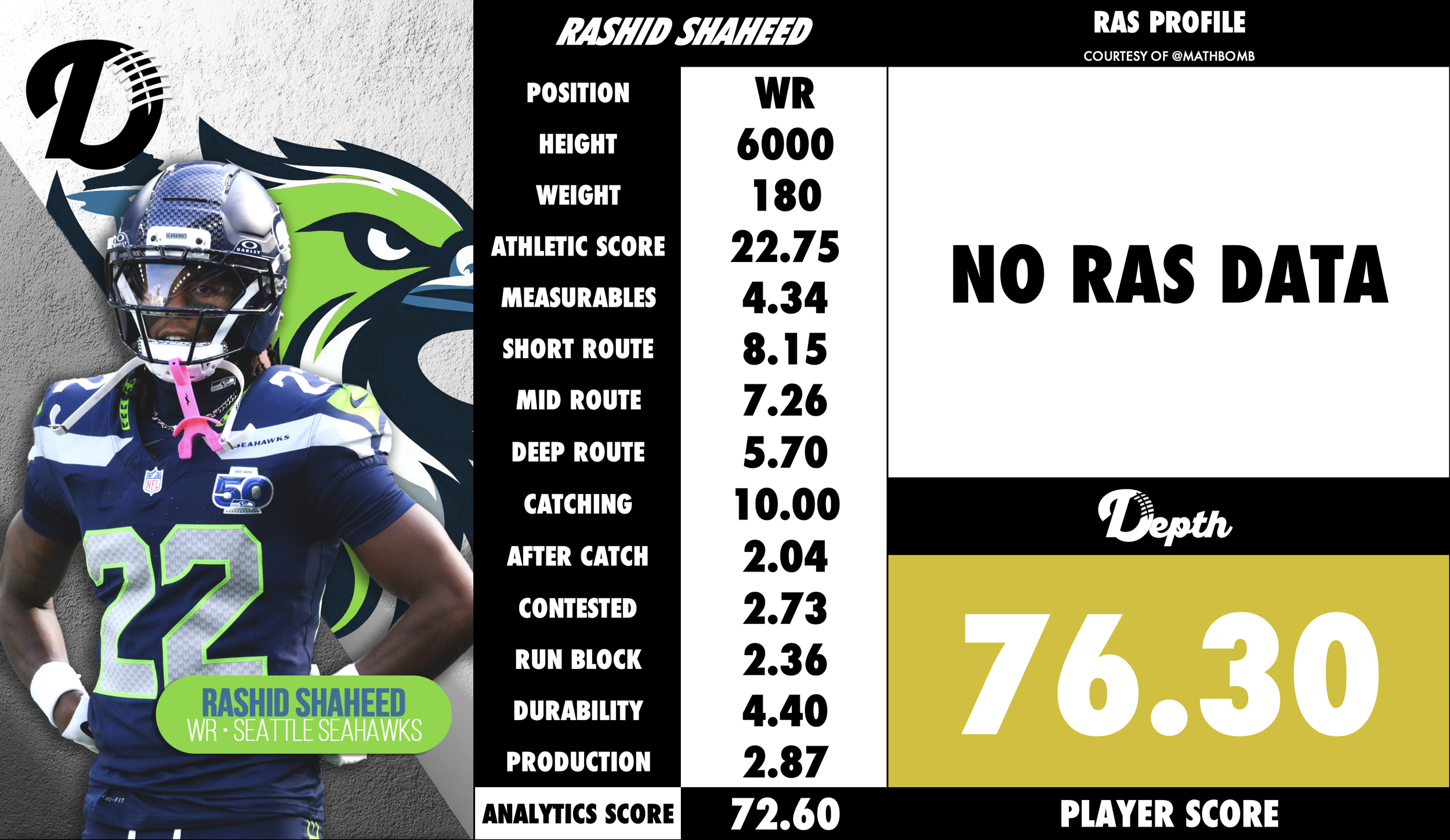
Rashid Shaheed
Summary
Shaheed went undrafted in the 2022 Class out of Weber State University. Shaheed entered the NFL with minimal draft capital but has made his mark as a deep‑threat wide receiver and elite return specialist. His college career at Weber State featured exceptional speed, big‑play ability, and kick/punt‑return production. In the pros, he’s shown flashes of high upside—particularly in stretching defenses vertically—though questions remain around consistency, route‑refinement, and how his skill‑set translates when he's relied upon more heavily as a true all‑around receiver.
Strengths
Elite top‑end speed & vertical‑stretch ability: Shaheed has demonstrated game‑breaking speed; for instance, he reached 21.72 mph on an 87‑yard touchdown reception, which was noted as the fastest speed recorded on a TD reception that season. Heavy Sports
Big‑play conversion upside: In his limited opportunities, he’s shown the ability to turn receptions into big chunks—his rookie year highlighted his yards per route‑run and deep‑ball productivity.
Special‑teams value / return threat: Shaheed’s return‑game production gives him extra value and forces defenses to respect him even when he isn’t heavily targeted in the offense.
Explosive acceleration out of cuts / quickness to space: He shows the ability to burst into space and exploit mismatches once the defense is stretched vertically. PFSN
Undrafted‑free‑agent upside & hunger: Since entering the league undrafted, he has overcome lower expectations and carved out opportunity, suggesting strong work ethic and developmental potential.
Weaknesses
Route‑running and separation consistency: While his straight‑line speed is a major asset, his route tree and ability to consistently win through nuanced technique and separation — especially at the intermediate levels — remain areas for refinement.
Frame / contested‑catch physicality: At around 6’0″ and 180 lbs, Shaheed lacks the prototypical size and physicality to dominate contested catch situations or consistently beat press coverage by physical means. CBS Sports
Injury and durability caution: His speed‑based game and lighter build make durability a concern, and missing time can hinder continuity in role growth. PFSN
Role dependency and volume floor: He is at his best as a field‑stretcher threat rather than a high‑volume, possession‑style receiver. His production can dip if volume, target share or quarterback play falter. 4for4
Adjustment when used as full‑time receiver vs. specialized role: Transitioning from deep‑threat and return specialist into a more full‑time receiver role with heavier coverage and more complex route responsibilities may present a learning curve.
Fit & Outlook
Shaheed fits best in an offensive scheme that leverages his speed in vertical and clear‑out roles: think deep‑shots off play‑action, motion‑alignments to free him into space, and opportunities as a jet‑motion or orbit‑sweep threat. His value is maximized when the defense must respect his ability to score in one play, thereby opening room underneath for others. The return‑game facet provides added utility and helps keep him on the field across multiple phases. Outlook‑wise, his upside is intriguing. In the best case, he becomes a reliable “number 2/3” wide receiver who consistently threatens deep, forces defenses to respect his speed, and adds return value—effectively a high‑ceiling complementary piece. For that to happen, the volume must increase, route technique must sharpen, and injury risk must be managed. On the flip side, if his role stays limited to occasional deep looks and he fails to develop a steady intermediate presence or sustained target share, he may settle into a specialized deep‑threat/return‑specialist niche rather than an all‑purpose starter. Given his tools and early flashes, though, he represents a worthwhile investment as a breakout candidate if fit and opportunity align.


